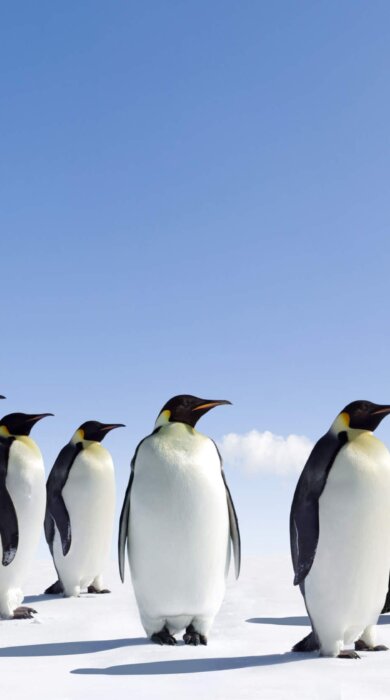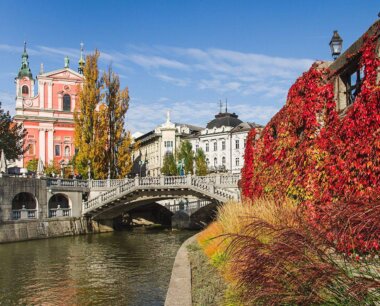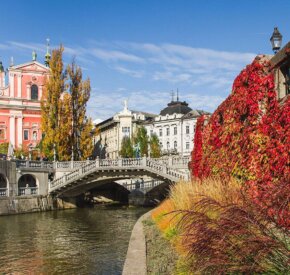
Wildlife encounters in Antarctica
The scale and magnificence of Antarctica has powerful magnetism – and a wildlife encounter here will never disappoint…
There is something very special, almost spiritual, about Antarctica. When asked why he returned there again and again to bitter cold and uncertain survival, Frank Wild (second-in-command of Ernest Shackleton’s famed Endurance expedition of 1914-16), said he couldn’t escape the ‘little voices’. It’s hard to explain to anyone who hasn’t already been there, but the same little voices call many people back to the White Continent time and time again.

It’s exceptional for other reasons, too. No country owns any part of the continent. The UK, Norway, France, Argentina, Chile, New Zealand and Australia all have territorial claims, which have been ‘frozen’ by the Antarctic Treaty, but the entire continent belongs to no one.
A number of babies have been born there – the first was Emilio Marcos de Palma, born at the Argentinian base, Esperanza, on 7 January 1978. It is home to about 1,100 scientists and support personnel in winter; up to 5,000 in summer. But there is no native population and no one lives there permanently.
Even better, despite all the remoteness and wildness, you can get to the Antarctic Peninsula region, explore a sizeable chunk of it, and get home again in little more than two weeks. The same journey a century ago would have demanded no less than two or three years – and you may not have come back alive.
Drake Passage

Over the years, I have seen a fantastic variety of cetaceans on Drake crossings: Hourglass, Peale’s and southern right whale dolphins; orcas and long-finned pilot whales; sperm whales; humpback, fin and sei whales; Antarctic and dwarf minke whales; southern right whales; and even southern bottlenose whales. But a lot depends on weather and sea conditions – and search effort. Just remember: you won’t see anything if you’re not out there looking. If you do make the effort, you’ll soon discover that two days on the Drake just isn’t long enough.
South Shetland Islands

There are a number of outstanding landing sites here. A few trips attempt Point Wild, on Elephant Island, to pay homage to the 22 men – Frank Wild among them – stranded here for four months in 1916 until Ernest Shackleton came to the rescue.
More likely stops include: Penguin Island, which looks rather like the surface of the moon and is home to nesting chinstrap penguins and southern giant petrels; Aitcho Islands, for their nesting chinstrap and gentoo penguins, wallowing southern elephant seals and scattered whale bones; Half Moon Island, a small crescent-shaped island with breeding chinstrap penguins, Antarctic shags, Wilson’s storm petrels, snowy sheathbills, sub-Antarctic skuas and other seabirds; Yankee Harbor on Greenwich Island, well-known for its breeding gentoo penguins and many ill-tempered Antarctic fur seals; and Hannah Point on Livingston Island, which has a bit of everything (it also offers one of the best chances of seeing macaroni penguins).
A particular highlight is Deception Island, a collapsed volcanic cone whose centre is accessible by ship through a narrow opening, called Neptune’s Bellows, in the volcano’s walls. Sailing into its flooded caldera is an experience in itself. Apart from the spectacular volcanic scenery, this ring-shaped island is jampacked with chinstrap penguins, has a thriving colony of Antarctic fur seals, and is home to an old Norwegian whaling station and an abandoned British Antarctic Survey base. It may even be possible to take a dip in some hot thermal waters inside.
A visit to an active research station, such as the Polish Arctowski or Brazilian Ferraz, is another possibility. There are many cutting-edge science projects in the South Shetlands, including the longest-running penguin project in the world.
Antarctic Peninsula

The seals you are most likely to see on and around the Peninsula are Weddell, crabeater and leopard. The Weddell seal has the most southerly distribution of any mammal and is common here; it has a remarkable range of vocalisations that can be heard both above and below the ice. The crabeater seal is believed to be the world’s most abundant pinniped (estimates vary but there are probably 10-15 million of them); they are found mainly far south on the Antarctic pack ice. With its unmistakable reptilian-shaped head, the fearsome leopard seal is another familiar sight around the Peninsula; it is usually seen alone, resting on ice or hunting near penguin rookeries.
The Peninsula is home to large numbers of whales. Three species are seen regularly – humpback, Antarctic minke and orca – and many people experience close encounters with at least one of them from the Zodiacs. Humpbacks are extremely common in some areas and it’s not unusual to see 100 or more in a single day.
Possible stops (depending on weather and ice conditions) include: Hope Bay, which is home to one of the largest colonies of adélie penguins in the world as well as the friendly Argentine base, Esperanza; Paulet Island, surrounded by massive icebergs calved from the Larsen Ice Shelf and home to another massive adélie penguin colony; Port Lockroy, one of the most-visited sites in Antarctica, with its gentoo penguins, whale bones, a British base and a post office run by the UK Antarctic Heritage Trust (the only chance to send postcards home); Paradise Bay, surrounded by wild mountains, filled with myriad ice floes and majestic icebergs, and often described as one of the most beautiful natural harbours in the world; Petermann Island, a gorgeous snow-covered island with tobogganing adélie penguins, as well as the southernmost breeding colony of gentoos; and the famous Lemaire Channel, a spectacularly beautiful seven-mile long ice-choked waterway, sandwiched between Booth Island and the mainland, complete with resting seals and lots of birds.
Then it’s back across the Drake, with a short stop at Cape Horn (weather permitting) to marvel at one of the most famous landmarks in the world and to look for the Peale’s dolphins and myriad seabirds that seem to hang around there with wonderful regularity. Then, before you know it, you’re back in Ushuaia.
A comfortable adventure
Marco Polo had an interesting theory about adventures: ‘An adventure is misery and discomfort’ he said, ‘relived in the safety of reminiscence’. Unfortunately, he never had the opportunities to travel on an Antarctic expedition cruise ship. The greatest thing about visiting this place at the bottom of the world – perhaps the ultimate wildlife and wilderness destination – is that it’s easy.
Most of the expedition on cruise ships plying Antarctic waters are like comfortable hotels, with almost as many staff as guests, teams of international experts on everything from polar exploration on to seabirds, mindbogglingly spectacular views out of every window, superb international cuisine, and a range of facilities including well-stocked libraries and theatre-style auditoria.

At first, many people worry about getting in and out of the Zodiacs with their cameras and pride intact. But, after the first – often hilarious – attempts at stepping ashore gracefully, it soon becomes second nature. Many people stay ashore for the maximum time allowed – typically from one to three hours depending on the day’s itinerary – but the Zodiacs make good water-taxis and ferry people backwards and forwards according to demand. Lunch will frequently be interrupted by ever-changing scenery and spectacular wildlife spied through the portholes, while the ship cruises to the next venue. Few holidays offer such awe-inspiring and ever-changing scenery over a single meal. Then comes another call to get ready. It might be for a second shore landing at a different site, or for a Zodiac cruise through beautiful ice scenery, past seals and penguins resting on ice floes, or among feeding whales.
In the evening, there may be another shore landing or Zodiac cruise, a lecture in the auditorium, or you may choose to spend a few more exhilarating hours on deck before forcing yourself to turn in for the night. One of the problems with visiting the Antarctic in mid-summer is the long hours of daylight. Even after a full day of intrepid adventure, with the ship well on its way to the next breathtaking destination, you daren’t sleep for fear of missing something. You want to be on deck, or on the bridge, to glimpse just one more iceberg, one more Antarctic seal or one more whale, or to take just one more spectacular photograph. There is only one solution – stay up all night and then sleep when you get home.
When to go?
The Antarctic season runs from November to mid-March (the southern spring and summer) and each month has its special highlights. November is best for ice, pristine snow and courting penguins. December and January are warmer, with longer hours of daylight, penguins feeding their chicks and better whale-watching; the receding ice also opens up new channels for exploration. February and early March are best for whale-watching, but the penguin rookeries have quietened down and much of the snow has melted or turned to mud. During the Antarctic summer, temperatures at the Antarctic Peninsula range from about -10°C (14°F) to 6°C (43°F) but usually hover just above zero.
How to do it?
Most expedition cruise ships leave Ushuaia, southern Argentina, for the South Shetland Islands and the Antarctic Peninsula. Trips typically last 9-14 nights. Longer trips include the Falkland Islands and South Georgia. The notorious sail across the Drake Passage takes about two days and can be tough but is swiftly forgotten as soon as you reach the protected waterways near the continent.
Once there, expect two or three landings or Zodiac cruises every day (depending on the size of ship and the weather). The largest ships offer cheaper tours but have so many passengers they need to operate a shift system (no more than 100 people are allowed on shore at one time), which means that each passenger has considerably fewer (and shorter) landings. Some are so large than no one goes ashore – they are for cruising only.
Large ships are also likely to cause more disruption and could pose a serious threat to passenger safety, given limited resources available in an emergency. The smallest ships offer more space ashore, but take longer to cross the Drake and give a rougher ride. Ships carrying about 100 passengers are the perfect compromise. Alternatively, it is possible to fly from Punta Arenas in southern Chile to King George Island, in the South Shetlands, for a day trip or to join a ship already there. Admittedly, you avoid the sea crossing, but it’s expensive and you miss out on the real adventure.




















